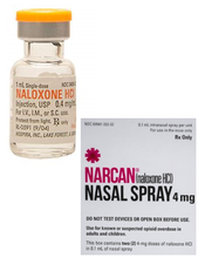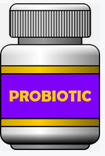by Rose Rohloff Naloxone is an emergency medication; it is temporary and doesn't stop or eliminate opioid abuse, addiction. This week, reports were released in the media that US homes need Narcan to aid in opioid overdose epidemic, surgeon general advises Dr. Delos Marshall "Toby" Cosgrove, the previous CEO of Cleveland Clinic, spoke to a room of healthcare leaders from across the country about the Opioid Crisis in April 2017. The discussion centered around the abuse of taking prescribed medications - legally and illegally - with the current trend of NARC Parties. He explained that NARC Parties entail the supply of Naloxone (the common brand name is Narcan, used by hospital-emergency personnel as the medication to temporarily counteract a narcotic or heroine overdose.) He continued that having Naloxone allowed people to overdose, the person(s) were then given Narcan in order to continue partying. The general public needs to be aware: Naloxone has been reported to foster increased abuse of drugs by allowing revival of overdosing for continuing to take more drugs. Naloxone is the generic of Narcan. Just as EpiPen is only the delivery system and not the generic drug Epinephrine, It is important to know the difference between the brand name versus the generic drug name. The danger of advising the untrained public to distribute emergency medicine"A serious problem is many doctors and many more nurses are unaware of the different mode of metabolism of Fentanyl and Methadone. With various dosages of Fentanyl and Heroin or combinations of other opioids, the efficacy of Naloxone or Naltrexone is compromised. The general public (let alone many new doctors and nurses) do not have a working understanding of the differences in these competitive antagonists." "There may not be any impact for at least 30 minutes with a basic spray." 45 year RN, BSN, NP, MSN, Committee Member Opioid Crisis, Board of Directors Health Facility Many clinicians, let alone the general public, are not specifically trained in the proper dosage and treatment with Naloxone for the various forms and dosages of opioids and heroin. FDA Advisory Committee on the Most Appropriate Dose or Doses of Naloxone to Reverse the Effects of Life-threatening Opioid Overdose ... Sept 2016 "The effectiveness of naloxone, and thus the exposure required, will depend on the opioid dose, the potency of the opioid in binding receptors, the lipophilicity of the opioid in crossing into the CNS system and the elimination half-life of the opioid, together with patient factors (7, 26). Appendix [2] and [2a] includes further information on naloxone pharmacology. The complex pharmacology of appropriate dosing is further compounded as often the fentanyl involved is illicitly manufactured without normal procedures or controls and may be introduced surreptitiously into heroin or prescription painkillers. Reports from the field confirm the need for additional naloxone doses to reverse opioid overdoses including those involving more potent fast onset synthetic opioids." Narcan (Naloxone HCL) Use in Opiod Overdose: A Perspective4/10/2018 by Joan M. Rider-Becker, BS, PharmD, FMPARetired, Emeritus Professor, Pharmacy Practice Ferris State University College of Pharmacy Education/Training An important point for the general public who is not used to or trained in emergency medicine, this “rescue” drug is only the first step in the opioid crisis ... not the end all and be all of treatment. I would like to respond to this “advisory report” from the Surgeon General as a pharmacist, an Emeritus Professor, Pharmacy Practice from a College of Pharmacy, former President/Chair of the Michigan Pharmacist Association (MPA) and Fellow of this Association; and lastly as a chronic pain patient.
I have used opioids now for chronic pain management after a car accident almost twenty-years ago. I will admit, I was taken aback by my family physician about a month ago being given a prescription for Narcan (generic name Naloxone) as a “precautionary measure” for my chronic opioid use. The form I was prescribed is a nasal formulation vs. the oral/injection form. When I took it to a pharmacy to be filled, I had to undergo “special counseling” by a pharmacist (even with my credentials) which consisted of a video on proper use and a warning that after use, 911 had to be called and I was to be taken to the emergency room for follow-up. This is the proper follow-up when someone is prescribed any rescue medication for a drug reaction. The Naloxone is only to be given when a known opioid (i.e. codeine and it’s derivatives; Fentanyl, Meperidine, etc...) is given or taken in life-threatening incidences. I was instructed, "Were you aware that Naloxone has two elimination half-lives because this drug has an active metabolite; and, were you aware that Naloxone and Naltrexone are different agents, but are easily confused." I believe giving someone this agent for overdose situations is giving a false sense of security that nothing else needs to be done. Nasal Naloxone is like putting a bandage on a cut artery. You may stop the blood flow at the moment, but the wound will continue to bleed if the wound isn’t sutured properly. Without appropriate emergency room follow up of an opioid overdose the person may die from that overdose. Many opioids vary in dose, strength, predictability and most of all drug half-life. Knowing the half-life of drugs is essential to know how long the drug is going to last in your body. Drug half-life’s, drug absorption, distribution and elimination is well covered in Colleges of Pharmacy in courses such as pharmacology, pharmacokinetics and pharmacotherapeutics. Pharmacists do not know the pharmacokinetics on every drug substance out there by memory, and we are called the drug experts. Physicians do not have nearly as much education on medications as pharmacists, yet they are the first line of treating drug overdoses in emergency situations along with the nurses, Physician Assistants and Nurse Practitioners. The general public is being provided a false sense of security by the media to carry this drug in their homes to address the opioid crisis. The public needs to be AWARE there is more to treating an opioid overdose than just squirting this agent up their nose.
0 Comments
What has caused the layering of medicationsThe country is currently facing increased antibiotic resistance, opioid crisis, etc. due to our culture being conditioned in the taking of medications versus alternative treatments, or prescriptions of medications without diagnosis. A mother of a small child was recently told by a doctor as part of her son's care, "It is very important for you to teach your child how to swallow pills. Start with candy sprinkles, then swallow mini M&Ms, and then have him swallow large M&Ms so he can take multiple pills at the same time." This instruction was given to the mother without a diagnosis for her son, no plan to achieve understanding of what was causing his pain to then create a plan of care - which may or may not have needed to include medication.
Consumer engagement is needed with all medications being prescribed to be fully empowered, to understand: 1) the need for prescriptions, why and when appropriate, 2) the side effects of medications to determine alternatives versus adding on more medications, and 3) to eliminate the misuse of medications without the continued layering of additional drugs. Antibiotics should only be used when the body, given time, cannot fight a severe bacterial infection. And, antibiotics should only be given out after a culture is performed to eliminate a virus as the cause, or to target the specific bacteria. Broad spectrum antibiotics should only be used with life threatening-septic issues while waiting for a culture, or there is not the ability to perform a culture. |
click an articleto read and post comments Search topicselect category
All
search by date
July 2024
|


